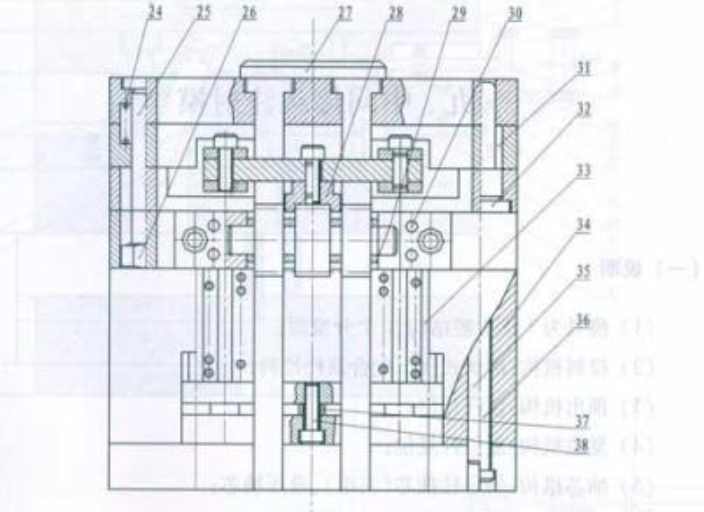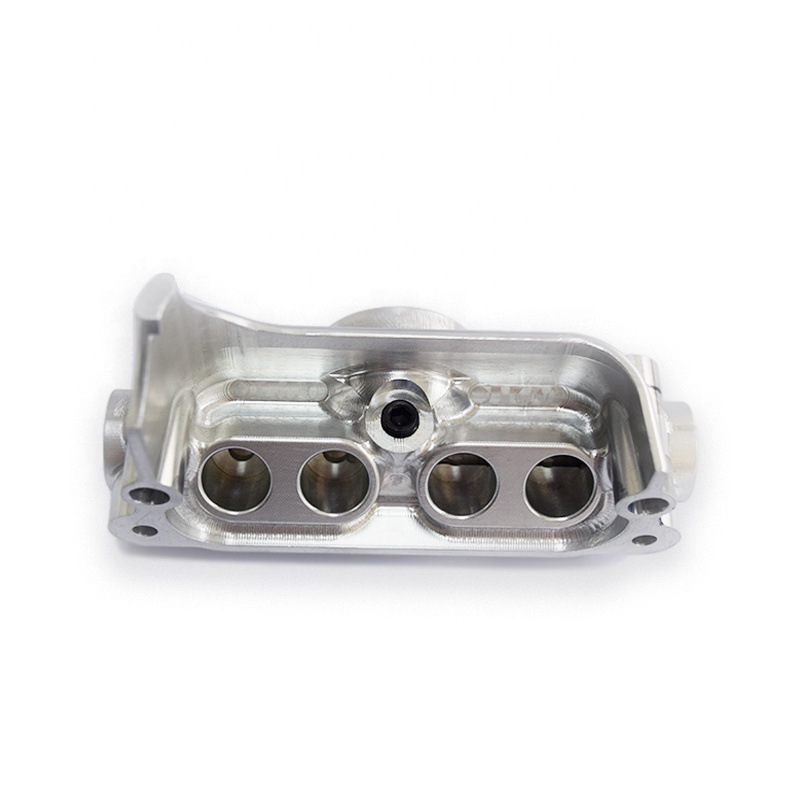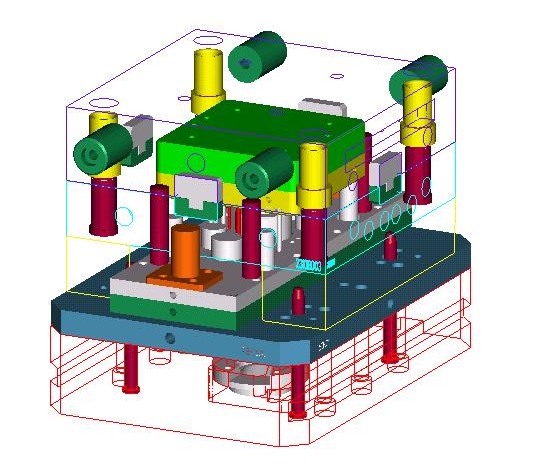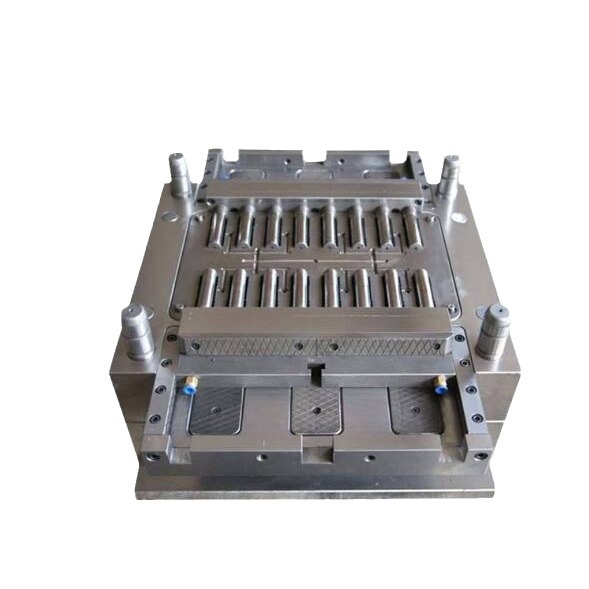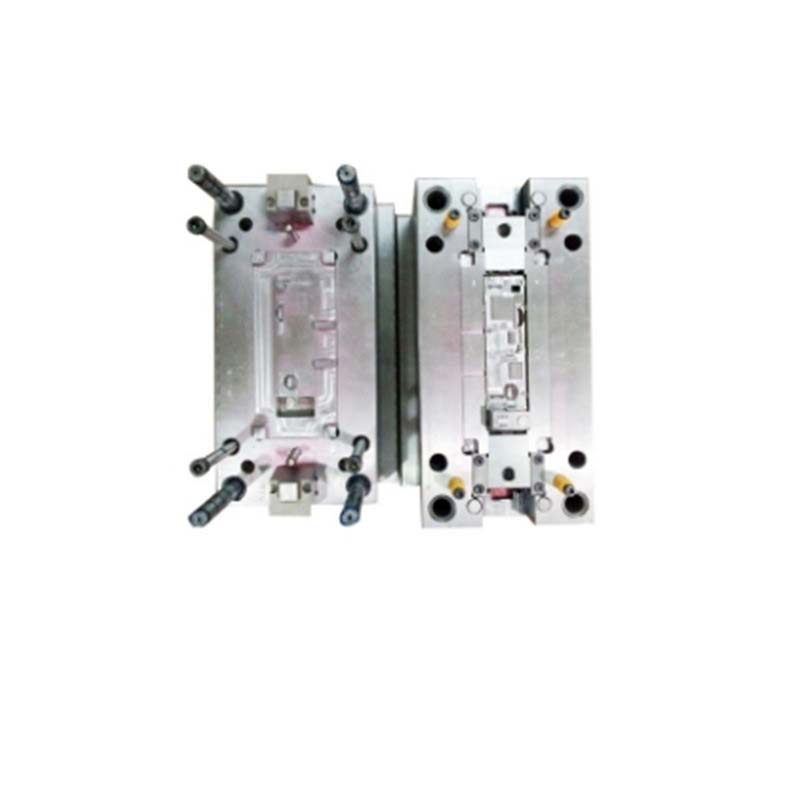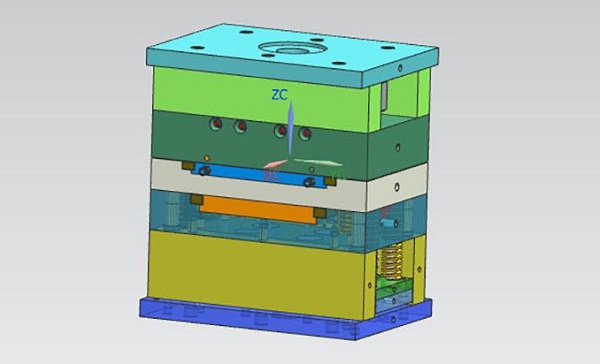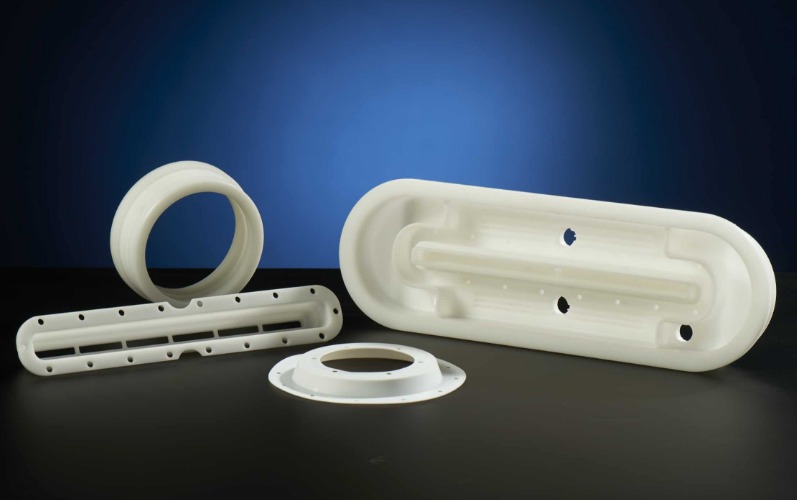1. Introduction
Injection molds manufacture is a crucial segment within the manufacturing industry, playing a pivotal role in the production of a vast array of plastic products that permeate every aspect of our daily lives, from the smallest electronic components to large - scale automotive parts. The price of injection molds manufacture is a topic of great concern for both customers and manufacturers.
For customers, understanding the factors influencing the price of injection molds is essential for making informed purchasing decisions. It allows them to budget accurately, compare quotes from different manufacturers effectively, and ensure they are getting the best value for their investment. Whether it's a startup looking to produce a new consumer product or an established enterprise aiming to optimize its production costs, price - related knowledge can significantly impact their business operations and competitiveness.
On the manufacturer's side, being aware of these factors helps in setting appropriate pricing strategies. It enables them to cover their costs, including raw materials, labor, and equipment, while also maintaining a reasonable profit margin. Moreover, it helps manufacturers in communicating clearly with their customers about the cost - breakdown, building trust, and avoiding misunderstandings during the business negotiation process.
In the following sections, we will delve deep into the various factors that have a significant impact on the price of injection molds manufacture, equipping you with the knowledge to navigate this complex but essential aspect of the manufacturing world.
2. Material Selection: The Foundation of Cost
2.1 Types of Plastics
The choice of plastic material is one of the fundamental factors influencing the price of injection molds manufacture. Different plastics come with their own unique properties and price ranges.
ABS (Acrylonitrile Butadiene Styrene) is a popular engineering plastic known for its excellent impact resistance, dimensional stability, and surface finish. It is widely used in the production of electronic device housings, automotive interior components, and toys. ABS has a relatively moderate price, usually ranging from \(1500 - \)2000 per ton. For example, in the production of a smartphone case using ABS material, the cost of the plastic raw material contributes a significant portion to the overall cost of the injection mold - related production.
PP (Polypropylene) is a common thermoplastic with good chemical resistance, high heat resistance, and low density. It is often used in the manufacturing of consumer goods such as food containers, plastic chairs, and automotive parts. PP is relatively inexpensive, typically priced around \(1000 - \)1300 per ton. Its cost - effectiveness makes it a preferred choice for high - volume production of products where cost control is crucial.
PE (Polyethylene) is another widely used plastic. LDPE (Low - Density Polyethylene) is soft and flexible, commonly used in plastic bags and film applications. HDPE (High - Density Polyethylene) is more rigid and is used for products like pipes, buckets, and storage containers. LDPE is usually priced at around \(900 - \)1200 per ton, while HDPE is in a similar price range, sometimes slightly higher depending on the specific grade and market conditions.
3. Complexity of Design
3.1 Geometric Complexity
The geometric complexity of an injection mold design is a major determinant of its manufacturing cost. Consider the following two - dimensional representation of a simple and a complex mold design:
Complex geometric shapes significantly increase the design and manufacturing difficulty. Designers need to spend more time on CAD (Computer - Aided Design) modeling to ensure the accuracy of the complex geometry. They must consider factors such as draft angles for proper ejection, clearance between moving parts, and the overall structural integrity of the mold. In manufacturing, complex molds may require more expensive machining processes, longer machining times, and higher - skilled labor. For instance, a mold with intricate internal cavities may need to be manufactured using electrical discharge machining (EDM), which is slower and more costly compared to traditional milling.
3.2 Tolerance Requirements
Tolerance refers to the allowable deviation from a specified dimension in a mold. High - precision tolerance requirements have a profound impact on the injection mold manufacturing process and cost.
In a mold with low - tolerance requirements (e.g., ±0.5mm), standard manufacturing equipment and processes can be used. General - purpose milling machines and lathes can achieve this level of accuracy without much difficulty. The manufacturing cost is relatively low as the production speed can be maintained at a normal level, and there is less need for extensive quality control measures.
However, when the tolerance requirements are extremely high, such as ±0.01mm, as is often the case in the production of precision medical devices or high - end electronic components, the manufacturing process becomes much more challenging. High - precision machining centers with advanced servo - control systems are required. These machines are significantly more expensive to purchase, operate, and maintain.
Moreover, the production speed may need to be reduced to ensure the required accuracy. Skilled operators with in - depth knowledge of precision machining are essential. Quality control also becomes more rigorous, involving the use of high - precision measuring instruments like coordinate measuring machines (CMMs) for frequent inspections.
The relationship between tolerance and cost can be approximately illustrated by a cost - tolerance curve. As the tolerance tightens (moves towards zero), the cost of manufacturing increases exponentially. For example, reducing the tolerance from ±0.1mm to ±0.05mm may double the manufacturing cost, while further reducing it to ±0.01mm can increase the cost by five to ten times, depending on the complexity of the mold and the manufacturing processes involved.
4. Production Volume Considerations
4.1 Economies of Scale
The production volume has a significant impact on the price of injection molds manufacture due to the principle of economies of scale. When the production quantity is low, the fixed costs associated with mold design, material procurement, and manufacturing setup are spread over a small number of products. As a result, the unit cost of each mold is relatively high.
For example, if a company manufactures an injection mold for a small - scale production run of 1000 units, and the total cost of mold design, materials, and manufacturing is \(50,000, the cost per unit attributed to the mold is \)50 (\(50,000 / 1000). However, if the production volume increases to 10,000 units, and the total cost remains relatively stable at \)55,000 (a small increase due to some minor additional material requirements), the cost per unit attributed to the mold drops to \(5.5 (\)55,000 / 10,000).
In a real - world case, a toy manufacturing company that produced a limited - edition collectible toy in a small quantity of 500 units had to pay a high unit cost for the injection mold. The mold cost was \(20,000, resulting in a mold - related cost of \)40 per toy. When they decided to produce a larger run of 5000 units of a similar toy the following year, with some optimization in the production process, the total mold - related cost increased to \(30,000. But the unit cost dropped to \)6 per toy, a significant reduction. This clearly shows how increasing the production volume can lead to a substantial decrease in the unit cost of injection molds, making large - scale production more cost - effective in terms of mold expenses.
5. Manufacturing Process and Technology
5.1 Traditional Machining vs Advanced Technologies
The manufacturing process and technology employed in injection molds manufacture have a significant bearing on the cost.
Traditional Machining: CNC (Computer Numerical Control) machining is a widely used traditional method. It involves the use of computer - controlled machines such as milling machines, lathes, and grinders. For example, in the production of a relatively simple injection mold with basic geometric shapes, a CNC milling machine can be used to accurately machine the mold cavity and core. The cost of CNC machining is relatively stable for standard - sized molds and common materials. The hourly rate for a typical CNC milling machine operation can range from \(50 - \)150, depending on the complexity of the machine and the region. However, for complex molds, the machining time increases significantly, leading to higher costs. If a mold requires multiple set - ups and long - term machining due to its complex geometry, the overall cost can be substantially higher.
Advanced Technologies:
- 3D Printing: Also known as additive manufacturing, 3D printing has made inroads into injection mold production. It allows for the creation of complex geometries that are difficult to achieve with traditional machining methods. For example, lattice - structured molds can be printed, which can reduce the weight of the mold while maintaining its structural integrity. The cost of 3D printing for injection molds depends on factors such as the size of the mold, the material used, and the printing resolution. High - resolution 3D printing of molds using advanced materials like metal powders can be very expensive. A small 3D - printed metal injection mold insert might cost several thousand dollars, while larger molds can cost tens of thousands of dollars. However, 3D printing can be cost - effective for low - volume production and rapid prototyping, as it reduces the need for expensive tooling and setup costs associated with traditional machining.
- Electrical Discharge Machining (EDM): EDM is used for creating intricate shapes and cavities in molds, especially when the material is hard and difficult to machine by conventional means. In EDM, an electric spark is used to erode the material, allowing for the creation of highly precise features. For instance, in the production of a mold with fine internal details or sharp corners, EDM can be used. The cost of EDM is relatively high due to its slow process and the need for specialized equipment and electrodes. The hourly rate for EDM can be \(100 - \)300, and the cost of electrodes also adds to the overall expense. Additionally, the post - processing required after EDM, such as removing the recast layer and polishing, further increases the cost.
5.2 Mold Flow Analysis and Simulation
Mold flow analysis and simulation technology have become increasingly important in injection molds manufacture.
Optimizing Mold Design: By using software like Moldflow, manufacturers can simulate the flow of molten plastic within the mold during the injection process. This allows them to predict potential issues such as short shots (where the plastic does not fill the entire mold cavity), weld lines (where two streams of plastic meet and form a visible line), and uneven cooling. For example, in the production of a large plastic automotive bumper, mold flow analysis can help determine the optimal gate location (the point where the plastic enters the mold cavity). By choosing the right gate location, the plastic can flow more evenly throughout the mold, reducing the risk of defects. This ultimately leads to a more efficient mold design, reducing the need for costly design modifications during the actual production process.
Reducing Trial - and - Error: Without mold flow analysis, manufacturers often have to rely on trial - and - error during the mold - making process. This involves multiple mold trials, which can be time - consuming and expensive. Each mold trial requires materials, machine time, and labor. By using mold flow analysis, the number of mold trials can be significantly reduced. A study showed that companies that implemented mold flow analysis were able to reduce the number of mold trials by 30 - 50% on average. This not only saves time but also reduces the cost associated with material waste, machine usage, and labor during the trial - and - error process.
Increasing Upfront investment cost: However, it's important to note that mold flow analysis and simulation come with an upfront cost. The software licenses can be expensive, with some high - end mold flow analysis software costing tens of thousands of dollars per year. Additionally, trained personnel are required to operate the software effectively. These personnel need to have a good understanding of both the software and the injection molding process. The cost of training employees or hiring experts in mold flow analysis also adds to the overall expense. But in the long run, the savings achieved through optimized mold design and reduced mold trials often outweigh the initial investment.
6. Quality Assurance and Testing
6.1 Inspection Standards
Quality assurance and testing play a vital role in injection molds manufacture, and the inspection standards vary significantly across different industries and according to specific customer requirements.
In the automotive industry, injection molds for parts like bumpers, interior trims, and dashboards are subject to extremely strict inspection standards. For example, the dimensional accuracy of automotive injection - molded parts is often required to be within a very tight tolerance range, typically ±0.1mm. This is because any deviation in dimensions can affect the assembly of the final vehicle and its overall performance and safety. The surface finish of these molds also needs to be of high quality to ensure a smooth and aesthetically pleasing appearance of the automotive parts. Additionally, automotive parts often need to pass various mechanical and environmental tests, such as impact resistance, heat resistance, and UV resistance tests. The molds must be able to consistently produce parts that meet these rigorous performance requirements.
On the other hand, the electronics industry has its own unique inspection standards for injection molds. For instance, in the production of injection - molded parts for smartphones or tablets, the focus is not only on dimensional accuracy but also on the prevention of any potential contaminants that could affect the functionality of the electronic devices. The molds need to be inspected for cleanliness, and the parts produced should have a very low level of outgassing to avoid any interference with the sensitive electronic components. The tolerances for electronic components are also often extremely tight, sometimes as low as ±0.05mm or even less for critical components like connectors or housings for high - end devices.
7. Yigu Technology's Perspective
As a non - standard plastic metal products custom Supplier, Yigu Technology understands the significance of cost - effective injection molds manufacture.
In terms of material selection, we have an in - depth understanding of a wide range of plastic materials. We carefully evaluate the performance requirements of each project and select the most suitable materials. Instead of simply choosing the cheapest option, we focus on finding a balance between cost and quality. For example, when a customer needs a mold for producing a consumer - grade plastic product with normal strength and heat - resistance requirements, we might recommend a mid - range plastic like PP, which can meet the needs while keeping the material cost low.
Regarding the manufacturing process, we invest in advanced manufacturing technologies. Our state - of - the - art CNC machines and 3D printers enable us to handle both simple and complex mold designs efficiently. For complex molds, we use multi - axis CNC machining and 3D printing to ensure high - precision manufacturing. By optimizing the manufacturing process, we can reduce production time and costs without sacrificing quality.
In quality control, we have a strict inspection system. Our professional quality control team uses advanced testing equipment such as CMMs to ensure that every injection mold meets the highest quality standards. We believe that high - quality molds can reduce the failure rate during production, ultimately saving costs for our customers in the long run.
Overall, Yigu Technology is committed to providing customers with high - quality injection molds at a reasonable price by carefully considering material selection, optimizing the manufacturing process, and maintaining strict quality control.
